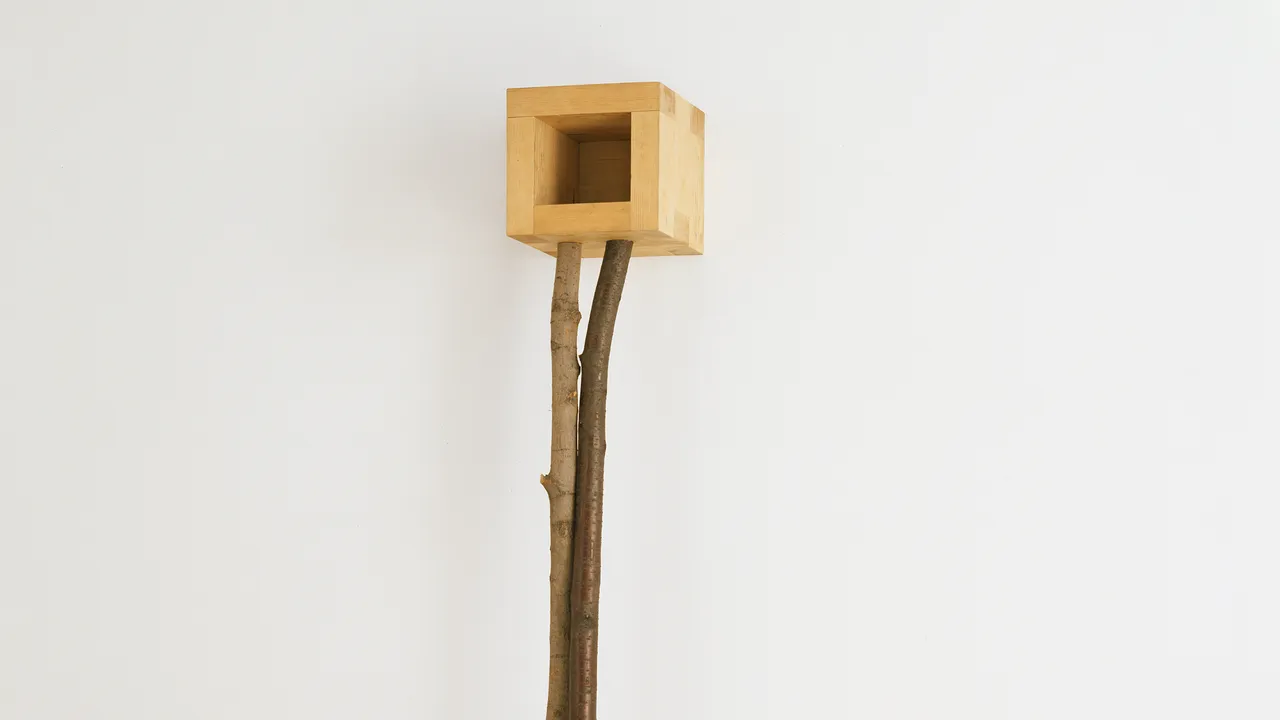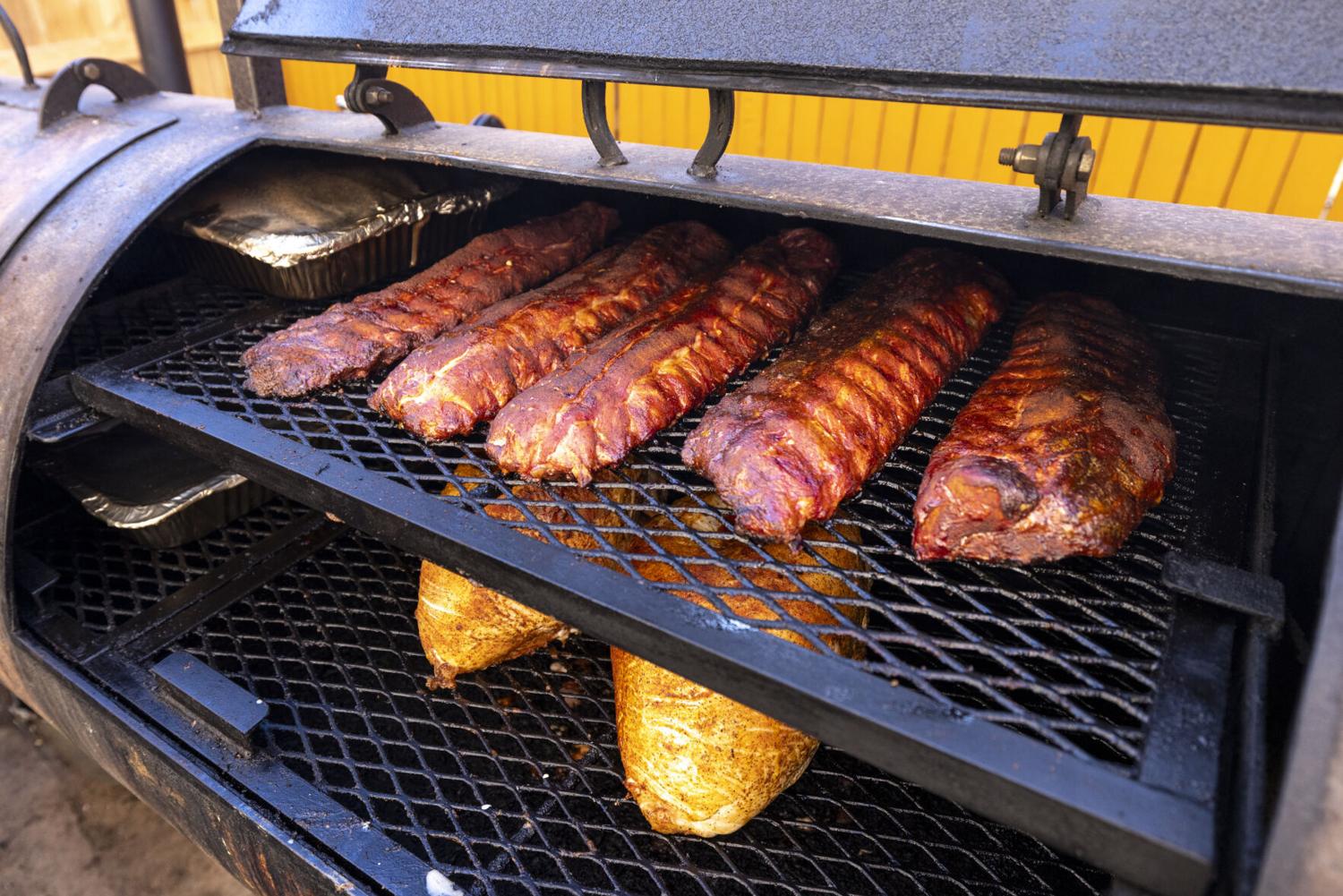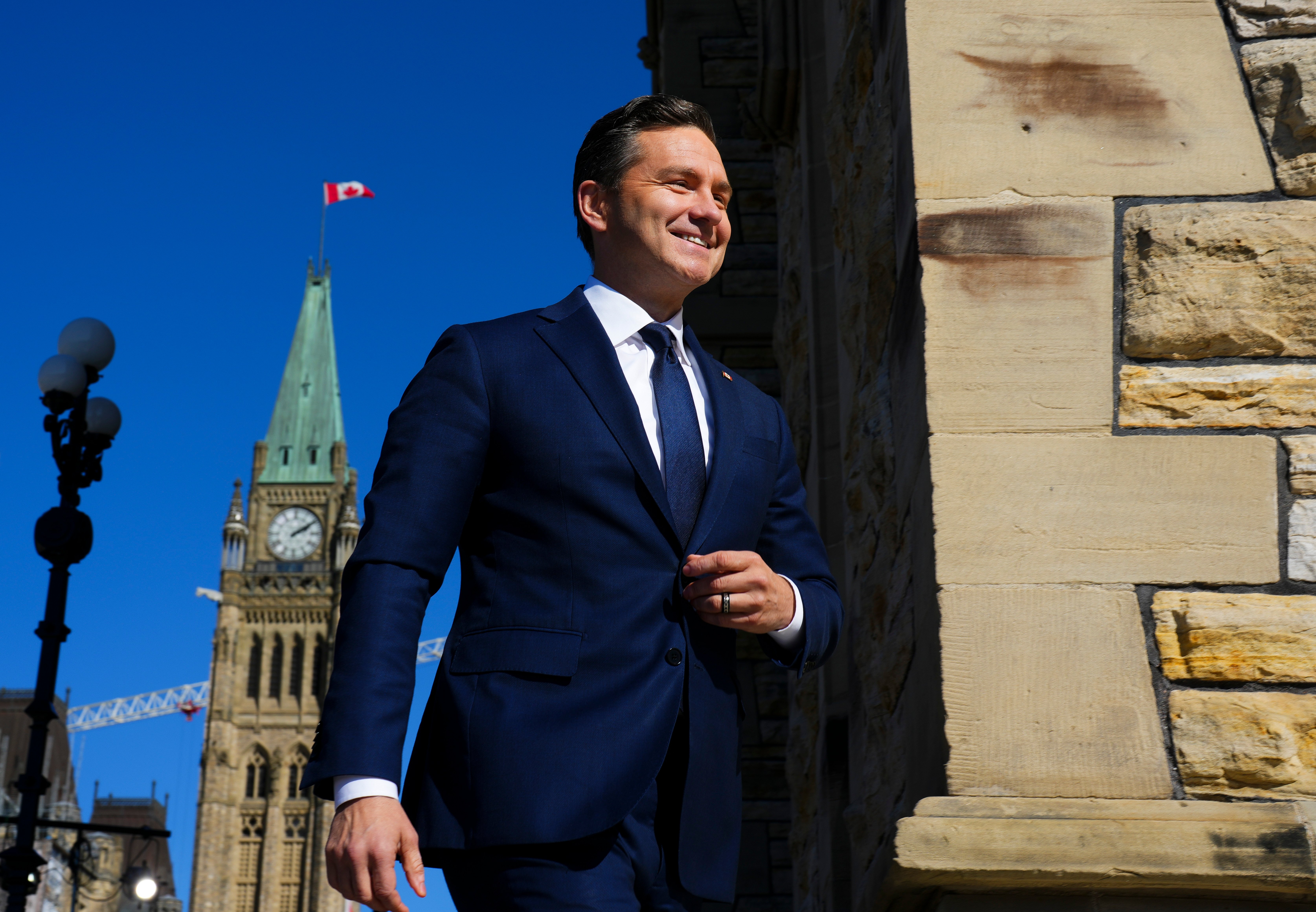Copyright The New Yorker

One of the first things encountered in “Nexus,” the Martin Puryear retrospective now at the Museum of Fine Arts, in Boston, is a sculpture made in 1982, a few years after most of his work was destroyed in a studio fire. “Sanctuary” consists of a small pine box, open on one side, like a bird feeder, resting ten feet up on a pair of long, leggy branches that cross right about where their ankles should be. At their lower ends, the branches terminate in two paw-like feet that are fixed to the axle of a small wheel, ready to roll. It’s all dead wood, but those crossed limbs seem insouciant, those pinned paws are unnerving, and the cobbled-together promise of shelter and mobility speaks to thinking on the fly. “Sanctuary” is a reminder of just how singular an artist Puryear is. It’s a serious work of contemporary art that seems to have fallen out of a fairy tale—not the monophonic Disney kind but the capricious, found-object kind collected by the Brothers Grimm, in which the moral is oblique, anything can come to life, and nobody leaves unscathed. Born in 1941, Puryear came of age at a time when sculpture was flexing its muscle through intimidating scale, conceptual rigor, and protractor-perfect geometries. (Think Richard Serra, Nancy Holt, and Mark di Suvero.) For a moment, Puryear almost seemed to fit. In 1979, eight years after he’d received his M.F.A. from Yale, the cover of Artforum featured a photograph of his sculpture “Bask” (1976). A slice of a black circle cutting across the page, arced on one side and straight on the other, it might have been mistaken for an Ellsworth Kelly. Met in person, however, “Bask” is less Kelly than it is sleeping seal: a long, ground-hugging ridge of stained wood, strip-planked like a homemade canoe, and improbably organic in attitude. “Nexus” contains many similarly elegant shapes that might lazily be termed “minimalist” but refuse to actually be minimal. “Self” (1978), for example, takes the form of a kind of standing hummock tapering upward at one end. Like “Bask,” it’s made from a shell of dark wood, and up close you can see how the main body is constructed from vertical staves, while its highest point—sociably, at eye level—is domed with stacked horizontal rings. Faced head on, the whole thing seems to shrug slightly to the right. It’s an object that shouldn’t have body language, yet it does. And from body language, it’s a quick jump to personality. Those who grew up with Tove Jansson’s Moomins may see in “Self” a shade of the cold and lonely Groke, slouching through life with those same indeterminate not-quite-shoulders, that same sense of being sealed off from the world. And so it goes: The large outrigger in “Lever #1” (1988-89) is titled for a tool but strongly suggests a wagging tail. A knee-high, cast-iron sculpture composed of three ovoids is instantly recognizable as a raptor perched on a rock, at once evoking stillness and incipient motion. (Puryear is also a trained falconer.) Really, Puryear has never fit in. For sixty years, his work and career have proceeded in quiet defiance of dogma about the way important art should look, behave, or be made. In an era that valorizes outsourced production, he has always preferred making things by hand. He used a stint with the Peace Corps, in Sierra Leone, and two years studying printmaking at the Swedish Royal Academy of Art to learn from local carpenters, toolmakers, and furniture-makers. When it was considered a weakness to let viewers’ minds divert from confronting the mute material presence of an abstract object, Puryear made space for allusion. (The eight-foot-tall inverted funnel of “Noblesse O.,” from 1987, can be viewed as pure form, but it would be silly to deny its resemblance to the Tin Man’s hat.) It’s as if, sometime in the nineteen-sixties, Puryear looked around at the pieces of human experience being excluded from high art, and decided to invite them all in. The exhibition’s title is a nod to this openness and complexity, the way that, in any Puryear work, you can pick multiple threads to follow—the flat-out beauty of his forms and materials; the ingenuity of his joinery; the resemblances and references to nature, to history, and to a Black artist’s reflections on Blackness and whiteness. Everything connects. “Nexus” is also the name of a piece from 1979: a large, not-quite-circular hoop of cedar that flares out slightly where the two ends—one painted black and one painted white—meet. An etching from Puryear’s student days in Stockholm shows him already rehearsing the mound shape that would recur in so many variations later on, here composed of four lumpy blocks—three inked in a mottled beige, one inked in black—and titled “Quadroon.” In the catalogue, the curator Emily Liebert tells the story of Puryear’s childhood encounter with John James Audubon’s portraits of two gyrfalcons, one white and one black, the result of environmental adaptation. “I made a connection about human racial difference by way of these species,” Puryear said. Growing up, Puryear aspired to be a wildlife illustrator; in college, he planned to major in biology before switching to art. Nature, its surfaces and interior logic, is a constant presence throughout this show. Wall labels identify the woods used—Alaskan yellow cedar, Swiss pear, lignum vitae—as one might name a respected collaborator. At a deeper level, nature’s inherent mechanism of reiteration and mutation is also Puryear’s. In sculptures, drawings, and prints you can watch as the peculiar hump of “Quadroon” straightens up to become “Self,” then stretches into something resembling a hunkered-down bear, then elongates into something like a preening bird. In the twenty-tens, it puffed out and acquired the distinctive flopped shape of a Phrygian cap—a sartorial emblem of liberty during both the American and French Revolutions. The cap has good high-art credentials: Delacroix may have neglected to provide his “Liberty Leading the People” with shoes or a blouse, but he gave her a Phrygian cap. It is also the signature headgear of the Smurfs. Puryear’s “Big Phrygian” (2010-14)—bright red and the size of a riding mower—keeps both these legacies in view, even as your attention is drawn to just how it is that planks of red cedar can be arranged to produce the illusion of enormous soft folds. Puryear has skills as a woodworker, a printmaker, a draftsman, and even as a falconer, but his greatest gift as an artist is his ability to keep all these things in play at once. He may well be America’s greatest living sculptor, and his achievements have hardly gone unrecognized—a MacArthur Fellowship in his forties, a MOMA retrospective in his sixties, the American pavilion at the Venice Biennale in his seventies. Somehow, though, he still seems underrated. Perhaps it’s because he works slowly, which means there’s just less of his art around to generate constant buzz; or perhaps it’s that his things are finely made and the word “craft” can give high-minded art people the heebie-jeebies; or perhaps it’s because his art is so resistant to simple this-is-what-it’s-about explanation. That is, of course, the point. Puryear is not a hectoring artist. The extraordinary thing about his art isn’t what it tells you; it’s the way it can gather your attention in one place and direct it somewhere else. It would be unfair to say nothing is quite what it seems, but accurate to say that nothing is only what it seems. One of the most captivating recent works in “Nexus” is “The Way” (2022). Sprouting from a low block shaped like a covered wagon that’s lost its wheels, a long sapling curves some eight feet up into the air to provide a perch for a thin wand pointing ahead (or perhaps behind, there’s no way to know). The original version of the composition was concocted, like “Sanctuary,” from a scarecrow-like collection of parts: a maple sapling, a willow shoot, a base of pine and curly maple. This piece, however, is cast in bronze, endowing its daffy choreography with gravitas. Sticks and stones may do what they like, but bronze is in the business of monuments. It speaks to past and to present, whispering serious things. What kinds of things? In a blue mood, it’s possible to see “The Way” as “Sanctuary” ’s sorry aftermath—the wheels have fallen off, the shelter is closed, the supplicant is being directed elsewhere. But something about the work’s improbable balancing act—the small dowdy base exerting enough gravity to keep the rest airborne—breathes energy into the air around it. Like a toddler urgently pointing to something the adult world long ago stopped seeing, or feeling the magic of, there’s power furled up in that insistent gesture, that demand to pay attention. ♦



